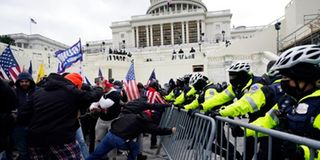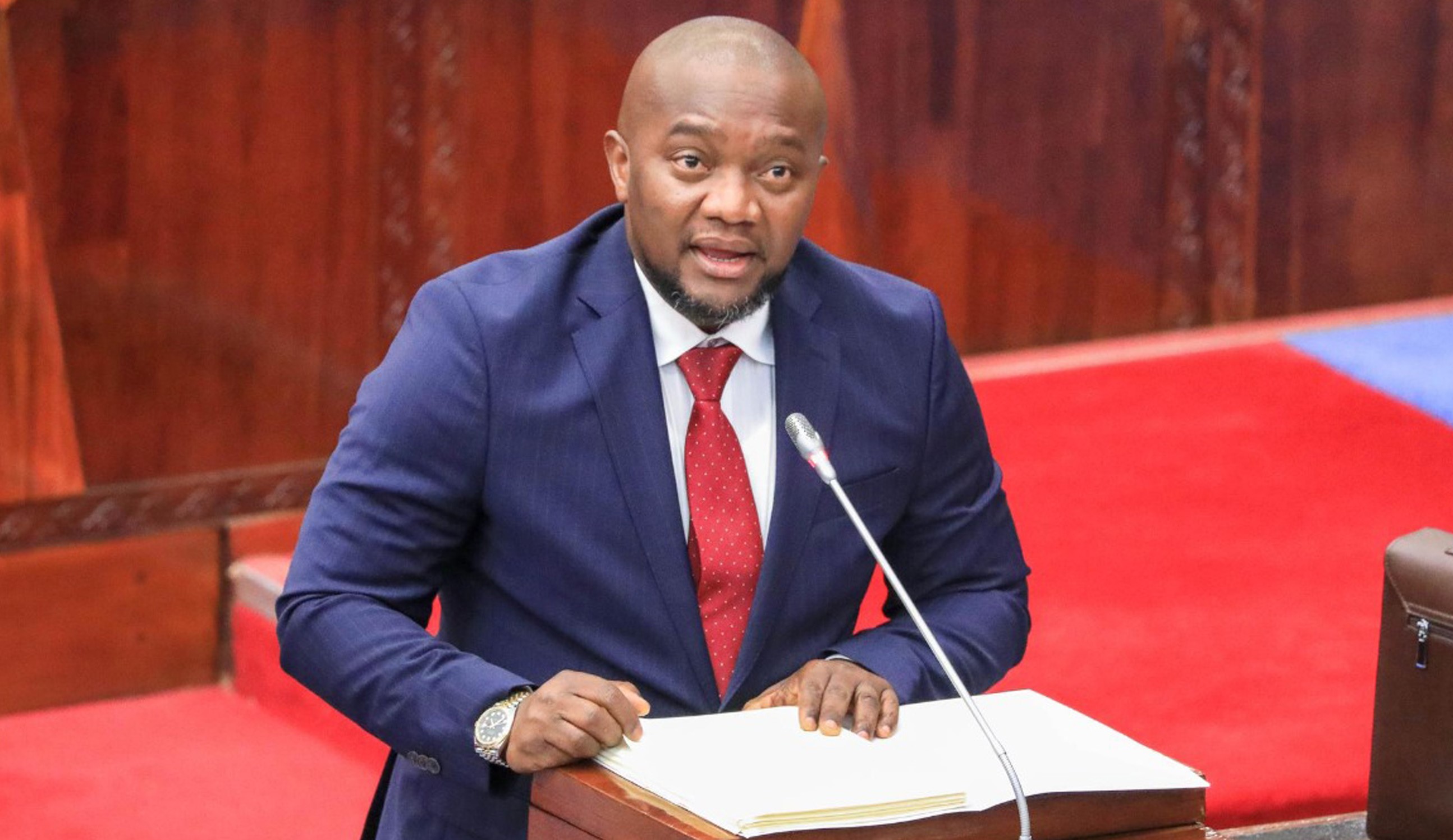A coup in US? Unthinkable? Think again

Trump supporters try to break through a police barrier at the Capitol on January 6 last year in Washington, DC. FILE PHOTO | COURTSEY
Most people would think you are insane if you suggested that a military coup can happen in America. Nah, it’s just not possible, all would say. Yet in the realm of possibility, nothing is impossible in this world.
In fact, three retired US generals have warned of this very possibility. In an op-ed commentary published on December 17 in The Washington Post, Generals Paul Eaton, Antonio Taguba and Steven Anderson implored the Pentagon (the headquarters of the US Department of Defence) to prepare for another “insurrection” after the 2024 election, going by what happened on January 6 last year. That was when right-wing extremists beholden to Donald Trump violently stormed the US Capitol complex in Washington DC to stop lawmakers from certifying President Joe Biden’s 2020 election win.
That mayhem may not have been a classic military coup. However, what the three generals were warning against was the likelihood of something worse happening if organised renegade military units joined the fray. Already, they noted, the political divide of 2020 is mirrored in the supposedly apolitical US military.
They pointed out that a surprising proportion of those who took part in the January 6 riot were either former or active duty soldiers. What’s more, a group of 124 retired military personnel have since gone public in support of Trump’s rejection of the legitimacy of the 2020 election. The numbers speaking out may be small, but the ones in silent support could be a lot more. Especially in a military where, according to electoral data, the majority of the approximately 1.3 million enlisted men and officers regularly vote Republican.
“The potential for a total breakdown of the chain of command along partisan lines – from the top of the chain to the squad level – is significant should another insurrection occur,” wrote the three generals.
You think this is all alarmist nonsense? Maybe. Maybe not. First, consider these men have served in the US military at a senior level. They were generals, remember? Their credibility should be, in theory, beyond reproach. They should presumably also have a fairly good idea as to the make-up and inclinations of the servicemen they worked with.
Two, The Washington Post is not just any rag to publish whatever trash that comes its way. It’s one of the two most respected newspapers in America (the other being The New York Times). The generals in my view may have been exaggerating the danger. But it’s an altogether different thing to think that the danger is non-existent. Especially with a dangerously polarising figure like Trump.
The military command structure of the US is very elaborately organised to ensure civilians are always in control. At the top is the President, of course, followed by the Secretary of Defence. Lower down, each of the four main branches of the US military – the army, navy, air force and marines – is supervised full-time by a civilian. There is a Secretary of the Army, a Secretary of the Air Force, and a Secretary of the Navy (who also oversees the Marine Corps). All are civilians appointed by the President.
The US military, which has an awesome annual budget of $700 billion, is organised into different combatant formations, key being the six geographic commands, as they call them, that encircle the globe. The youngest is the Africa Command, stationed at Stuttgart, Germany. (That Command should worry you). The most interesting thing about the command structure of these combatant but independent formations is that, when it comes to war, they don’t get their deployment orders from the Joint Chiefs of Staff, who are the highest ranking military officers in the US armed forces. The orders to each fighting Command must come directly from the White House. Those are the rules. The Joint Chiefs’ role is limited to planning, logistics, and coordination – and advising the President on military matters. They have no command authority on the field troops. This eliminates chances of rogue orders emanating from rogue generals at the pinnacle of the Pentagon.
Other safeguards guarantee that the top-most layer of military officers don’t overstay in their posts. The chairman of the Joint Chiefs of Staff has a fixed four-year term, which is never extended. Clearly Kenya borrowed from the US this term limit idea for its equivalent officer, the Chief of Defence Forces (though his term is sometimes extended at the Kenyan President’s discretion).
Still, there are gaps. Those who know history will remember the career of General Douglas MacArthur, who during the Second World War commanded the US Far East forces that defeated the Japanese. When the Korean War broke out, he was seen to defy President Harry Truman’s orders, and was recalled. A charismatic general like MacArthur, who was hugely popular among the troops and the American public alike, can very well force a showdown with the civilian US leadership on a policy matter he disagrees with. That’s how coups ferment. Imagine if the President was unpopular, like Truman was at some point. Anything can happen.
Ancient Rome was there too. An enormously popular general, Julius Caesar, overthrew the Republic and established an imperial dynasty bearing his name.
As Christians worldwide celebrated their Christmas Day last week, they had little idea it’s the Caesars who imposed that date.





